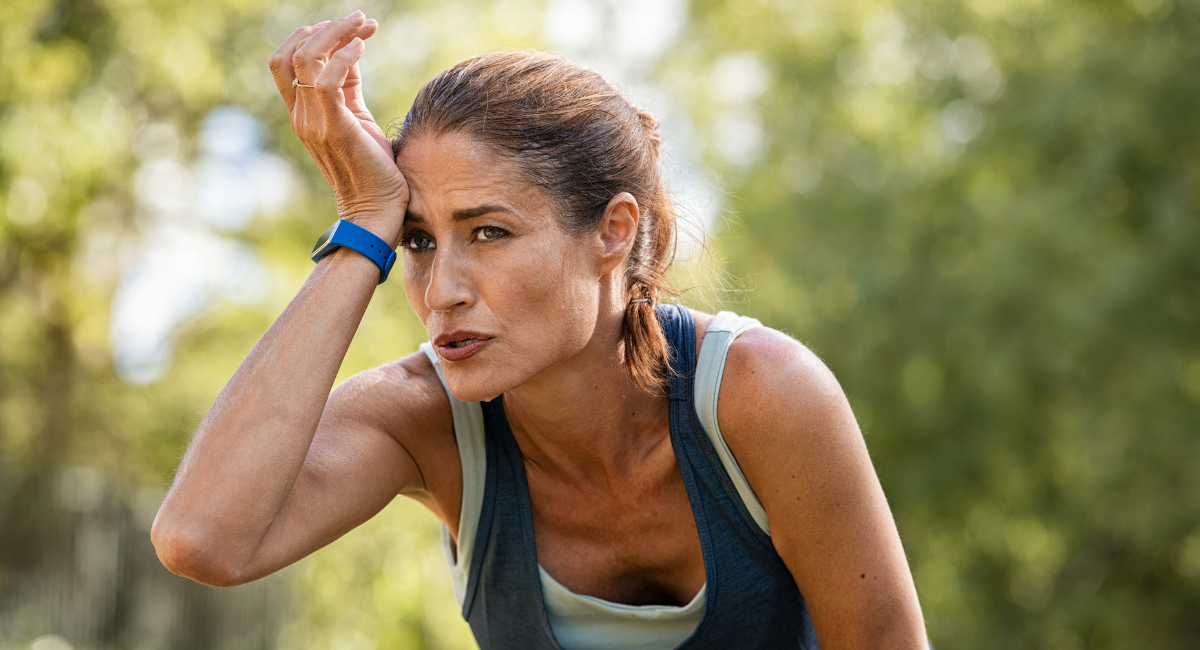 As the summer heat settles in, fitness enthusiasts face a challenging dilemma: how to maintain their outdoor exercise routines without succumbing to the scorching temperatures. While the allure of sunshine and fresh air beckons, the risks of heat exhaustion and dehydration loom large. However, with the right strategies and precautions, it’s possible to keep working out in the heat even during the hottest months.
As the summer heat settles in, fitness enthusiasts face a challenging dilemma: how to maintain their outdoor exercise routines without succumbing to the scorching temperatures. While the allure of sunshine and fresh air beckons, the risks of heat exhaustion and dehydration loom large. However, with the right strategies and precautions, it’s possible to keep working out in the heat even during the hottest months.
Tryon Medical Partners internal medicine specialist Dr. Elaine Campbell provides effective methods to keep your cool while you exercise in the heat, ensuring your fitness journey remains both safe and invigorating.
What happens to my body when I exercise in the heat?
Dr. Campbell explains that exercise can increase your core body temperature. The increase in body temperature is why you sweat: Your body produces perspiration to cool yourself down. If you’re exercising outside, and it’s hot out, it will be more difficult for your body to cool itself. This puts you at increased risk of overheating – and can lead to heat illnesses like fainting or heat stroke.
“When it’s really hot outside, especially in the late spring or summer, you’re at increased risk of experiencing harm from the heat,” Dr. Campbell emphasizes. “To keep yourself safe while working out in the heat, it’s important to talk about prevention.”
How can I adapt to working out when temperature and humidity soar?
Dr. Campbell has a few recommendations for helping her patients stay cool while exercising outdoors in the heat:
- Contemplate timing. Exercising in the morning and early evening often helps you avoid the hottest time of the day (in the Charlotte region, this is between 11 a.m. and 4 p.m. ET).
- Stay hydrated and balanced. Sweating helps to cool you down but also dehydrates and removes necessary salts and minerals. Dr. Campbell recommends drinking more water post workout and adding electrolytes. There are plenty of options available that will help rebalance your essential minerals, including sugar free options for diabetics.
- Protect yourself from the sun. Wearing light clothing will help protect you from the sun and cool you down. Protect your skin from the harmful UV rays by wearing an SPF of at least 30 and clothing that has a UPF 50+ rating.
- Acclimate. If you’re not accustomed to working out in the heat, it will be harder for your body to cool itself down. Consider taking an intentional acclimation period by tapering your outdoor workouts – first do 10 minutes, then 20 minutes, eventually working yourself up to the full outdoor workout time.
- Take breaks. Especially when you’re still adjusting, take frequent breaks instead of overdoing it. Go easier than you typically would in a workout until you have acclimated.
- Exercise together. Especially if you’re at increased risk of getting hot and fainting, walk with a loved one, such as a friend or a spouse, so that if something bad happens, there is someone to help you.
- Move it indoors. If it’s simply too hot to exercise outside safely, consider exercising somewhere air conditioned like a mall or a gym to ensure safety while getting your steps in.
“Even if you’re not at risk of heat illnesses or fainting, it is best to avoid excessive heat,” Dr. Campbell warns. “You shouldn’t wait until you see heat stroke symptoms to protect yourself from the heat.”
What are some symptoms of overheating?
Sometimes, even if you heed the recommendations above, your body can still overheat. Dr. Campbell recommends watching for the following signs, which indicate you should immediately take measures to cool yourself down:
- Dizziness
- Weakness
- Nausea
- Shortness of breath
- Muscle or heat cramps
“These could be signs of heat exhaustion or heat stroke,” Dr. Campbell says. “If you experience any of these signs, it’s important to pump the breaks and cool down.”
If I see these warning signs, what should I do?
Especially for certain groups, excessive heat can be dangerous. In general, children and the elderly are at increased risk. Additionally, if you or a loved one have coronary artery disease, diabetes, or autoimmune conditions, there will be an increased sensitivity to heat.
In terms of pumping the brakes while working out in the heat, Dr. Campbell advises:
- Stop moving. If you’re outside running, find a bench or sit on the ground. The goal is to avoid fainting, but if you do faint, it’s better to be close to the ground.
- Take some deep breaths. Make sure your body is getting plenty of oxygen and slow your heart rate down with deep breathing.
- Hydrate. Drink as much water as you can to hydrate, including electrolytes if you have them. Cool down the rest of your body and speed up the benefits of sweating by pouring water on your head and body.
- Seek shade. Get out of the sun to cool your body down even more.
“Especially if you notice these symptoms in children, make sure to act quickly,” Dr. Campbell says. “Take the kids to the shade, pour water on them, and get them into air conditioning if you can.”
When should I see a doctor for concerns?
If you exercise in the heat and become confused or lose consciousness, it’s important to get immediate medical attention. A doctor should investigate and see what’s going on and if additional medical service is needed.
If you have questions about staying safe in the summer heat, use MedChat to book an appointment with Tryon Medical Partners today.

